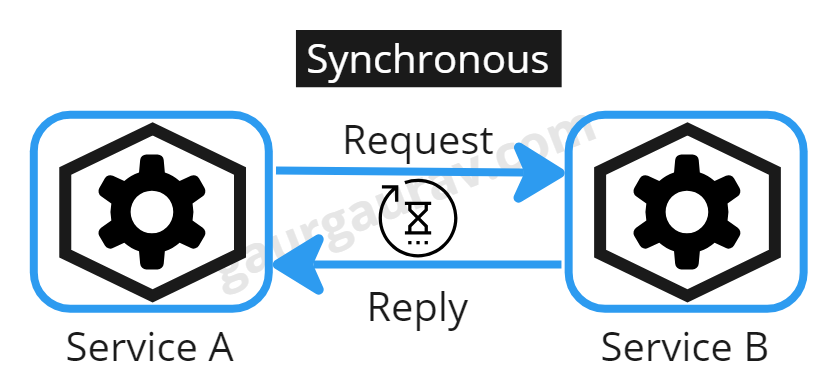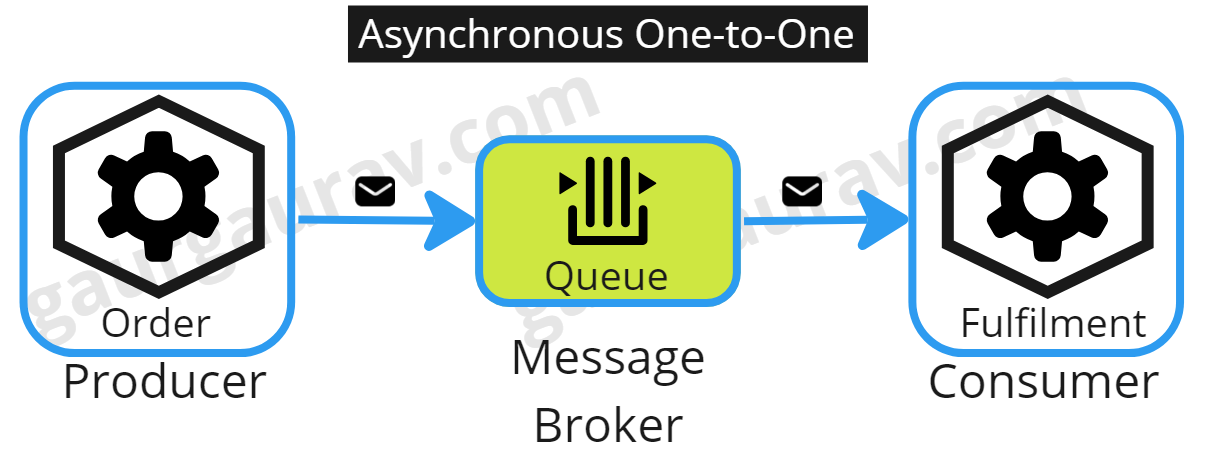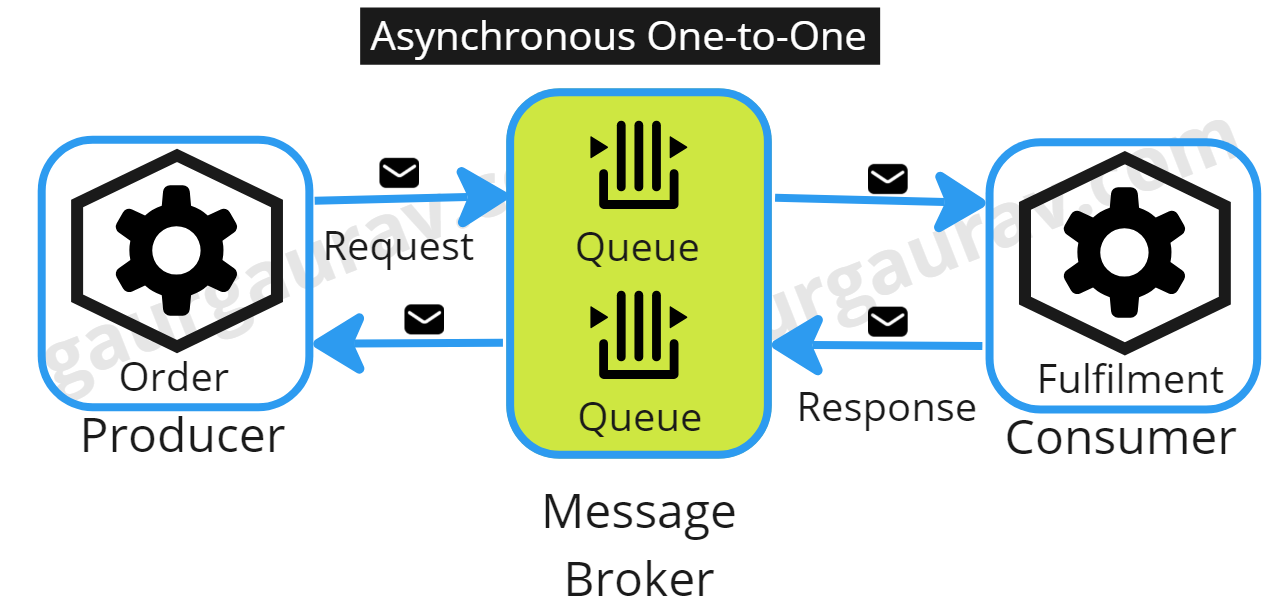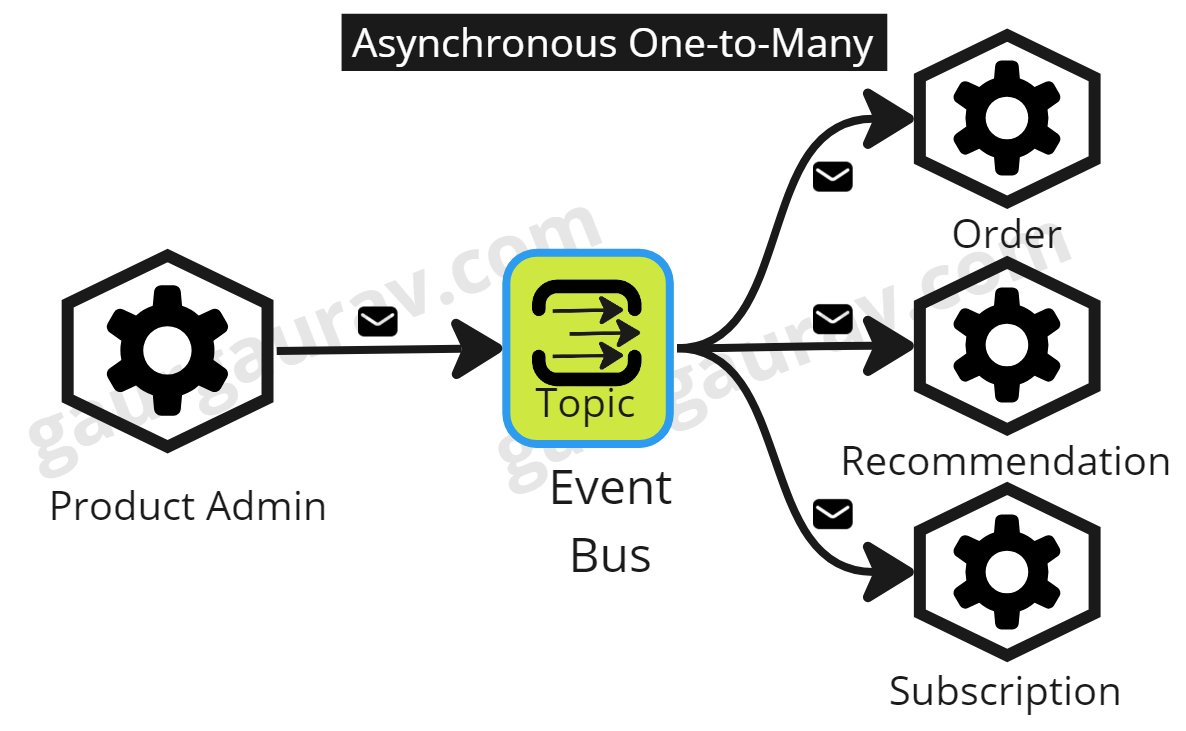Decoding Synchronous and Asynchronous Communication in Cloud-Native Applications
Explore synchronous and asynchronous communication in cloud-native applications. A guide to understand their use cases, challenges, and strategic application in system design.
Introduction
Imagine building a complex machine with numerous independent parts, each performing its function, but all needing to communicate effectively with each other to accomplish a task. This is the challenge we face when designing cloud-native applications, which consist of interconnected microservices and serverless components. In this article, we explore the specifics of designing robust and resilient communication systems that can effectively coordinate these independent elements both within and beyond the application boundaries.
These finely grained services engage in internal and external interactions, employing various communication methods, synchronous or asynchronous. In synchronous communication, a service invokes another service using HTTP or gRPC, awaiting a response within a specified timeframe before proceeding. Conversely, asynchronous communication involves exchanging messages without expecting an immediate response. Message brokers such as RabbitMQ or Kafka serve as intermediaries, buffering messages to ensure reliable delivery. In cloud-native applications, embracing a combination of communication patterns is often a practical approach. Let’s begin with synchronous communications first.
What is Synchronous Communication
Synchronous communication is like a conversation. One service (let’s call it Service A) initiates a request and then waits for a response from another service (Service B) or external APIs. This is akin to asking a question and waiting for an answer. Service A sends a request over HTTP and waits. It’s either waiting for a response from Service B or for a maximum waiting time to expire. During this waiting period, Service A is temporarily blocked, much like a person who pauses their activities to wait for a response. This pattern, often referred to as a request-reply pattern, is relatively simple to implement. However, using it extensively can introduce challenges that require careful consideration.
 Synchronous communication in cloud
Synchronous communication in cloud
Challenges of Synchronous Communication
While synchronous communication is a powerful tool in our cloud-native toolkit, it comes with its own set of challenges that require careful consideration.
Temporal Coupling
Excessive reliance on synchronous communication throughout the solution can lead to temporal coupling issues. It occurs when numerous synchronous calls are chained together, resulting in extended wait times for client applications to receive responses.
Availability Dependency
Synchronous communication necessitates simultaneous availability of all communicating services. If backend services are under unexpected loads, client applications may experience failures due to timeout errors, impacting overall performance.
Network Quality Impact
Network quality can directly impact the performance of synchronous communication, including available bandwidth and the duration required for responses to traverse between serving backend services.
Despite these challenges, synchronous communication can prove invaluable in specific scenarios. Let us explore some use cases in next section where synchronous communication might be the better choice.
When to use Synchronous Communication
Here are some situations where using synchronous communication can prove to be a better choice.
Real-time Data Access or Guaranteed Outcome
When immediate or real-time feedback is needed, synchronous communication offers efficiency. For instance, when a customer places an order on an e-commerce website, the e-commerce front end needs to check the inventory system to ensure the item is in stock. This is a synchronous operation because the application needs to wait for the inventory system’s response before it can proceed with the order.
Orchestrating Sequence of Dependent Tasks
In cases where a service must execute a sequence of tasks, each dependent on the previous one, synchronous communication maintains order. It is specifically appropriate for workflows where task order is critical.
Maintaining Transactional Integrity
When maintaining data consistency across multiple components is vital, synchronous communication can help maintain atomic transactions. It is relevant for scenarios like financial transactions where data integrity is paramount.
Synchronous communication is a powerful tool and has its challenges. The good news is that we also have the option of asynchronous communication—a complementary style that can work alongside synchronous methods. Let us explore this further in the next section.
What is Asynchronous Communication
Asynchronous communication patterns offer a dynamic and efficient approach to inter-service communication. Unlike synchronous communication, asynchronous communication allows a service to initiate a request without awaiting an immediate response. In this model, responses may not be immediate or arrive asynchronously on a separate channel, such as a callback queue. This mode of communication relies on protocols like the Advanced Message Queuing Protocol (AMQP) and messaging middleware, including message brokers or event brokers.
This messaging middleware acts as an intermediary with minimal business logic. It receives messages from the source or producer service and then channels them to the intended consuming service. Integrating message middleware can significantly boost the resilience and fault tolerance of this decoupled approach. Asynchronous communication encompasses various implementations. Let us explore those further.
One-to-One Communication
In a One-to-One message communication, a producer dispatches messages exclusively to a receiver using a messaging broker. Typically, the message broker relies on queues to ensure reliable communication and offer delivery guarantees, such as at least once. The implementation resembles a command pattern, where the delivered messages act as commands consumed by the subscriber service to trigger actions. Let us consider an example of an online retail shop to illustrate its use. An online business heavily depends on the reliability of its website. The pattern provides fault tolerance and message guarantees, ensuring once a customer has placed an order on the website, the backend fulfilment systems receive the order to be processed. The messages broker preserves the message even if the backend system is down and will deliver when these can be processed. For an instance, in an e-commerce application, when a customer places an order, the order details can be sent as a message from the order service (producer) to the fulfilment service (consumer) using a message broker. This is an example of one-to-one communication.
 Asynchronous One-to-One communication in cloud
Asynchronous One-to-One communication in cloud
An extension of the one-to-one message pattern is the asynchronous request-reply pattern. In this scenario, the dispatcher sends a message without expecting a response. But in a few specific scenarios, the consumer must respond to the producing service, utilizing the queues in the same message broker infrastructure queues. The response from the consumer may contain additional metadata such as ID to correlate the initial request or address to respond. Since the producer does not expect an immediate response, an independent producer workflow manages these replies. Such as the fulfilment service (consumer) respond back to frontend order service (producer) once order has been dispatched, so that customer can be updated on the website.
 Asynchronous One-to-One Request Reply communication in cloud
Asynchronous One-to-One Request Reply communication in cloud
The single consumer communication comes in handy when two services communicate point to point. However, there could be scenarios when a publisher must send a particular event to multiple subscribers, which leads us to the following pattern.
One-to-Many Communication
This communication style is valuable when a single component (publisher) needs to broadcast an event to multiple components and services (subscribers). The one-to-many communication uses a concept of topic, which is analogous to an online forum. Like an online forum where multiple users can post articles, and their followers can read them in their own time, responding as they fit. Similarly, applications can have topics where producer services write to these topics, and consuming services can read from the topic. It is one of the most popular patterns in real-world applications. Consider again the e-commerce platform has a service that updates product prices and multiple services need this information (like a subscription service, a recommendation service, etc.), the price update can be sent as a message to a topic in a message broker. All interested services (subscribers) can listen to this topic and receive the price update. This is an example of one-to-many communication. Several tools are available to implement this pattern, with Apache Kafka, Redis Pub/Sub, Amazon SNS, and Azure Event Grid ranking among the most popular choices.
 Asynchronous One-to-Many communication in cloud
Asynchronous One-to-Many communication in cloud
Challenges of Asynchronous Communication
While asynchronous communication offers many benefits, it also introduces its own set of challenges.
Resiliency and Fault Tolerance
With numerous microservices and serverless components, each having multiple instances, failures are inevitable. Instances can crash, become overwhelmed, or experience transient faults. Moreover, the sender does not wait for the message to be processed, so it might not be immediately aware if an error occurs. We must adopt strategies like:
- Retry Mechanisms: Retrying failed network calls for transient faults.
- Circuit Breaker Pattern: Preventing repeated calls to failing services to avoid resource bottlenecks.
Distributed Tracing
Asynchronous communication can span multiple services, making it challenging to monitor overall system performance. Implementing distributed tracing helps tie logs and metrics together to understand transaction flow.
Complex Debugging and Monitoring
Asynchronous communications can be more difficult to debug and monitor because operations do not follow a linear flow. Specialized tools and techniques are often required to effectively debug and monitor these systems.
Resource Management
Asynchronous systems often involve long-lived connections and background processing, which can lead to resource management challenges. Care must be taken to manage resources effectively to prevent memory leaks or excessive CPU usage.
Understanding these challenges can help design more robust and resilient asynchronous communication systems in their cloud-native applications.
Final Words!
The choice between synchronous and asynchronous communication patterns is not binary but rather a strategic decision based on the specific requirements of the application.
Synchronous communication is easy to implement and provides immediate feedback, making it suitable for real-time data access, orchestrating dependent tasks, and maintaining transactional integrity. However, it comes with challenges such as temporal coupling, availability dependency, and network quality impact.
On the other hand, asynchronous communication allows a service to initiate a request without waiting for an immediate response, enhancing the system’s responsiveness and scalability. It offers flexibility, making it ideal for scenarios where immediate feedback is not necessary. However, it introduces complexities in resiliency, fault tolerance, distributed tracing, debugging, monitoring, and resource management.
In conclusion, designing robust and resilient communication systems for cloud-native applications requires a deep understanding of both synchronous and asynchronous communication patterns. By carefully considering the strengths and weaknesses of each pattern and aligning them with the requirements, architects can design systems that effectively coordinate independent elements, both within and beyond the application boundaries, to deliver high-performing, scalable, and reliable cloud-native applications.

